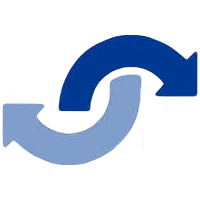Learning and development or training and development (L&D or T&D) programs have become a hot topic of discussion among workplaces internationally. According to a new study featured on Forbes.com, learning and development culture is now viewed by HR teams, employees, and job seekers alike as an essential part of a progressive workplace. In fact, according to the study, it has become a “competitive differentiator”, making companies with L&D programs stand out (to employees and those in the job market) among those without.
What’s changed? While offering a learning and development program was once primarily viewed as a perk used to attract new hires, building a thriving continuous learning program is quickly becoming a permanent fixture among companies around the world.
What is a learning and development program?
The term might seem self-explanatory, but there are many elements that make up a successful learning and development program and culture within a workplace.
Most business have some kind of training/learning and development courses in place. Most commonly, companies will offer HR-led training courses, such as Diversity, Equity, and Inclusion training, and Anti-Bullying and Harassment courses. However, there are numerous avenues for learning that fall under the umbrella of training and development. Courses that cover topics such as effective workplace communication, effective time management, and leadership.
A full-fledged L&D or T&D program will include an ongoing learning plan that can be applied to the entire workplace, or can be tailored to each department based on the development that the company would like to encourage in their team members.
What can a learning and development program bring to the table?
Expanding the learning and development programs that your company offers has several benefits to both your team and even your bottom line.
According to the afore mentioned new research, studies have found that 76% of employees are now more likely to stay with a company that provides them with the opportunity for continuous learning. That same study found that 55% of employees feel that they need additional training in order to perform better in their roles/job duties. With over half of employees agreeing that learning and development will improve their efficiency and three quarters agreeing that they prefer to stay with a company that invests in learning programs for their team, it’s more apparent than ever that a L&D program can boost productivity, retention, and overall job satisfaction among employees within a business.
Beyond satisfaction among current employees, a learning and development program is also now one of the key elements that job seekers are looking for when hunting for a place to work. According to HR managers featured in the recent study, the mention of a continuous training program led to an 83% boost in the attraction of new employees.
Not only has the data shown that companies who choose to invest in training are seeing a 24% higher profit margin that those who don’t, said businesses are also seeing an opportunity to promote from within their company, creating room for the organization to expand exponentially.

What exactly are the benefits of digital / e-learning?
In the past few years, as technology has continued to advance and people have become more inclined to work, learn, and socialize from home, e-learning has become an increasingly popular platform where HR teams and outsourced L&D companies can conduct online courses and lesson plans. E-learning, in the form of digital learning content is usually presented as audio, video, and/or downloadable lesson materials that are easily accessible for remote training.
The convenience of conducting training and development online versus in-person classes is seen as the primary benefit of e-learning, but the list of advantages continues! Online courses allow for each employee to view and participate in their session when their schedule best allows, instead of during a time when they potentially have other priorities that need to be completed. Digital learning allows employers to provide a window for when employees can complete their courses as opposed to having to coordinate, schedule and enforce a company or department-wide meeting. It also allows employees who work solely remotely (or team members who had to miss a day) to participate in the full lesson without missing a beat.
The HR perspective
An HR team is often faced with the responsibility of maintaining employee satisfaction and directing company culture. The overall objectives of employee recruitment relations, retention and engagement lead the way for a strong learning and development plan.
The strategic learning and development departments can be successfully supported through external expertise. HR is often leaned on to support both leadership and their employees and find themselves in a unique position of being able to identify the needs and invite opportunities to explore personal and professional growth.
For leadership, it may create avenues for business growth and continuity, while for employees, it may make them feel a sense of support and create opportunity.
The future of learning and development
Fractional learning and development is the way of the future. What this means is that we are no longer requiring onsite learning and development, but demanding a more customized approach to learning and development.
Employees are demanding flexibility, accessibility and customization.
Examples of successful L&D partnerships include:
- Flexible and accessible delivery – remote, onsite, on demand or pre-recorded
- Industry and organization specificity – employees are demanding a more customized approach to learning and development that is focused on their industry, their role, and their level within their team (emerging, developing, or strategic member of the team)
- Continuous learning – the most effective learning programs have opportunities for ongoing learning. Whether that is reflected in levels (101, 201, 301), or additional material to keep the learning going
- Choice – employees want a say in their learning and development journey

Where should my company start when building a L&D/T&D Program?
The good news is, if you don’t know where to start in building out your company’s Training and Development program, you don’t have to do it alone. There are now training companies that are dedicated to doing just that! A good training company will be able to provide a consultation to determine the following:
- What are your organization’s primary learning and development needs? What subjects and courses will help your team to best achieve company goals, and which will your employees find most useful in their day-to-day operations?
- What platform will work best for your employees’ schedules and accessibility needs? (Online, in-person, pre-recorded video sessions, or live remote learning sessions, etc.)
- What would a continuous learning program look like for your organization specifically? Will it focus on leadership training to promote internal growth? Will it focus on providing ongoing learning materials and resources for your employees?
Regardless of what exact direction you want to take your learning and development program into, a training and development company will be able to build out a comprehensive program that works best with the communication and working styles within your office.
If your company is ready to start building a customized learning and development program, Career Contacts’ sister company, Training Arch, is ready to help! With expert facilitators and a thorough understanding of all things Learning & Development, Training Arch is a great option for companies big and small to begin developing their L&D program!
For more information on learning and development, visit TrainingArch.com and for more HR and recruitment tips and resources, be sure to connect with us on LinkedIn stay tuned to our Blog!


